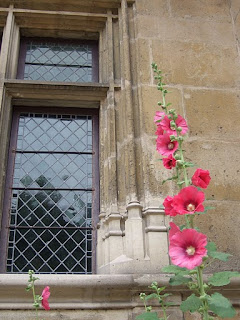It was a present. I received it at “Orticoline d'inverno”, the market flower show held at the beginning of December, in Milan, Italy. This is the second winter edition, but my first visit, while I am a loyal visitor of the most famous exhibition that occurs in May in Via Palestro, always-in Milan. I made a wise “sortie” reaching, soon after lunch, the Museo Diocesano, where the show was located. Opened in 2001, this museum collects ancient and precious works of art of sacred inspiration and liturgical use from the parishes of the surrounding area.
The show developed in two large rooms at either sides of the entrance, after an aisle I hastily crossed. Art and flowers welcomed the visitors i
At the entrance, a patient team composed bunches of flowers upon request.They fished the needed material from blue buckets. Flowers had reached Milan from the conservatories in San Remo, a town by the Mediterranean Sea.
This charming nosegay reminds me of another winter bunch. It was described in an article written by Mrs. Vita Sackville-West for the column she wrote for the “Observer” from 1946 to 1961. Later, many of these articles were collected in a lovely book “In Your Garden”. In her simple but careful style she presented the plants and places she knew, an everyday garden life she deeply loved and lived.
February 26, 1950
A dear near neighbour brought me a tussie-mussie this week. […] a nosegay […] It is composed of at least five different flowers, all perfectly chosen. She goes always for the best, which I am sure is the secret of good gardening: choose always the best of any variety you want to grow. Thus, in the bunch she brought me, the violet were pink violets, the sort called Coeur d’Alsace, and Iris Reticulata she put in was the sort called Hercules, which is redder than the familiar purple and gold. […] The anemone that she put in must be a freakishly early bloom of Anemone St. Bavo, amethyst petals with an electric-blue centre. (Sackville-West, 2004; 35)

I am not sure about the specie of these anemones, but […] a flowerless room is a soul-less room. (Sackville-West, 2004; 150)
I really love to see my winter nosegay in bloom on a table against a window that frames the first whirls of snow.
Flower show:
ORTICOLINE D’INVERNO - MUSEO DIOCESANO C.so di Porta Ticinese, 95 - MILANO
http://www.orticola.org/mostra.htm
Further readings:
In Your Garden – V. Sackville-West, First Frances Lincoln Edition, 2004 from Books Google December 2009
http://books.google.it/books?q=in+your+garden



